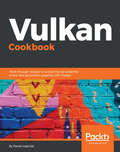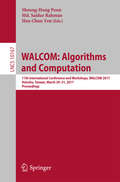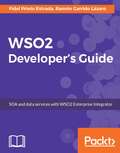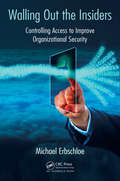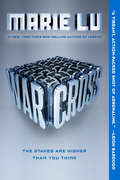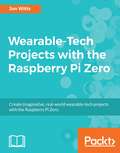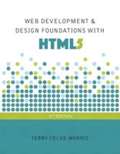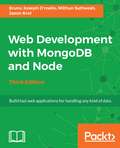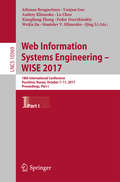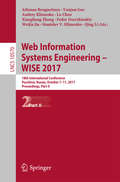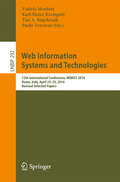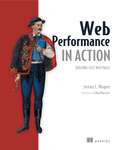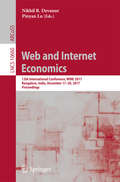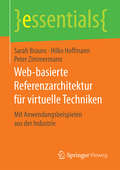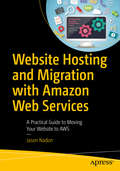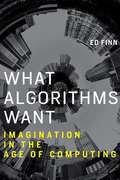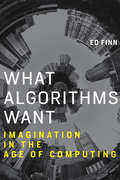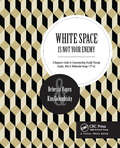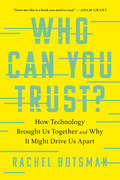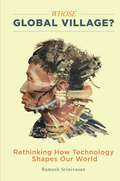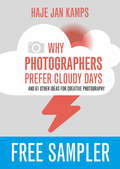- Table View
- List View
Vulkan Cookbook
by Pawel LapinskiWork through recipes to unlock the full potential of the next generation graphics API—Vulkan About This Book • This book explores a wide range of modern graphics programming techniques and GPU compute methods to make the best use of the Vulkan API • Learn techniques that can be applied to a wide range of platforms desktop, smartphones, and embedded devices • Get an idea on the graphics engine with multi-platform support and learn exciting imaging processing and post-processing techniques Who This Book Is For This book is ideal for developers who know C/C++ languages, have some basic familiarity with graphics programming, and now want to take advantage of the new Vulkan API in the process of building next generation computer graphics. Some basic familiarity of Vulkan would be useful to follow the recipes. OpenGL developers who want to take advantage of the Vulkan API will also find this book useful. What You Will Learn • Work with Swapchain to present images on screen • Create, submit, and synchronize operations processed by the hardware • Create buffers and images, manage their memory, and upload data to them from CPU • Explore descriptor sets and set up an interface between application and shaders • Organize drawing operations into a set of render passes and subpasses • Prepare graphics pipelines to draw 3D scenes and compute pipelines to perform mathematical calculations •Implement geometry projection and tessellation, texturing, lighting, and post-processing techniques •Write shaders in GLSL and convert them into SPIR-V assemblies •Find out about and implement a collection of popular, advanced rendering techniques found in games and benchmarks In Detail Vulkan is the next generation graphics API released by the Khronos group. It is expected to be the successor to OpenGL and OpenGL ES, which it shares some similarities with such as its cross-platform capabilities, programmed pipeline stages, or nomenclature. Vulkan is a low-level API that gives developers much more control over the hardware, but also adds new responsibilities such as explicit memory and resources management. With it, though, Vulkan is expected to be much faster. This book is your guide to understanding Vulkan through a series of recipes. We start off by teaching you how to create instances in Vulkan and choose the device on which operations will be performed. You will then explore more complex topics such as command buffers, resources and memory management, pipelines, GLSL shaders, render passes, and more. Gradually, the book moves on to teach you advanced rendering techniques, how to draw 3D scenes, and how to improve the performance of your applications. By the end of the book, you will be familiar with the latest advanced techniques implemented with the Vulkan API, which can be used on a wide range of platforms. Style and approach This recipe-based guide will empower you to implement modern graphic programming techniques and help gain a solid understanding of the new Vulkan API.
WALCOM: Algorithms and Computation
by Sheung-Hung Poon Md. Saidur Rahman Hsu-Chun YenThis book constitutes the proceedings of the 11th International Workshop on Algorithms and Computation, WALCOM 2017, held in Hsinchu, Taiwan, in March 2017. The 35 full papers presented together with three invited talks were carefully reviewed and selected from 83 submissions. The papers are organized in topical sections on invited talks; computational geometry; combinatorial optimization; graph drawing; graph algorithms; space-efficient algorithms; computational complexity; approximation algorithms.
WSO2 Developer's Guide
by Fidel Prieto Estrada Ramon Garrido LazaroWSO2 Made Simple – dive deep into the core concepts of WSO2 to overcome the challenges faced while using the Enterprise Integrator About This Book • Design, create, and publish services in the WSO2 technology • Integrate the WSO2 Enterprise Integrator with other components and servers • Log and test deployed services Who This Book Is For If you are a Java solutions architect or developer and are keen to understand how to build enterprise applications with WSO2, this book is for you. No prior knowledge of WSO2 is expected. What You Will Learn • Configure WSO2 Enterprise Integrator server in a production environment • Create SOAP Proxies and REST APIs • Interact with WSO2 Message Broker • Write services using the new language: Ballerina • Schedule automatic tasks for the services you create • Manage log messages depending on the log level of the system • Integrate with social networks such as Twitter, Facebook, Instagram, and Yammer • Test SOAP Services using the Tryit feature and SoapUI tool • Work with Quality of Services In Detail WSO2 Enterprise Integrator brings together the most powerful servers provided by the WSO2 company for your SOA infrastructure. As an Enterprise Service Bus (ESB), WSO2 Enterprise Integrator provides greater flexibility and agility to meet growing enterprise demands, whereas, as a Data Services Server (DSS), it provides an easy-to-use platform for integrating data stores, creating composite views across different data sources, and hosting data services. Using real-world scenarios, this book helps you build a solid foundation in developing enterprise applications with powerful data integration capabilities using the WSO2 servers. The book gets you started by brushing up your knowledge about SOA architecture and how it can be implemented through WSO2. It will help build your expertise with the core concepts of ESB such as building proxies, sequences, endpoints, and how to work with these in WSO2. Going further, you will also get well-acquainted with DSS data service concepts such as configuring data services, tasks, events, testing, and much more. The book will also cover API management techniques. Along with ESB and DSS, you will also learn about business process servers, the rules server and other components that together provide the control and robustness your enterprise applications will need. With practical use cases, the book covers typical daily scenarios you will come across while using these servers to give you hands-on experience. Style and approach The book is a complete guide and helps you get the right start—from understanding SOA architectures to getting valuable experience with two important integration servers such as ESB and DSS. It will include some real-world practical scenarios to help you master the best practices followed right across the industry and overcome the challenges you're likely to face on a daily basis.
Walling Out the Insiders: Controlling Access to Improve Organizational Security
by Michael ErbschloeInsider threats are everywhere. To address them in a reasonable manner that does not disrupt the entire organization or create an atmosphere of paranoia requires dedication and attention over a long-term. Organizations can become a more secure, but to stay that way it is necessary to develop an organization culture where security concerns are inherent in all aspects of organization development and management. While there is not a single one-size-fits-all security program that will suddenly make your organization more secure, this book provides security professionals and non-security managers with an approach to protecting their organizations from insider threats.
Warcross (Warcross #1)
by Marie Lu&“A vibrant, action-packed shot of adrenaline.&”—Leigh Bardugo, #1 New York Times bestselling author &“The Hunger Games meets Minecraft.&”—SeventeenFrom #1 New York Times bestselling author—when a game called Warcross takes the world by storm, one girl hacks her way into its dangerous depths. For the millions who log in every day, Warcross isn&’t just a game—it&’s a way of life. The obsession started ten years ago and its fan base now spans the globe, some eager to escape from reality and others hoping to make a profit. Struggling to make ends meet, teenage hacker Emika Chen works as a bounty hunter, tracking down Warcross players who bet on the game illegally. But the bounty-hunting world is a competitive one, and survival has not been easy. To make some quick cash, Emika takes a risk and hacks into the opening game of the international Warcross Championships—only to accidentally glitch herself into the action and become an overnight sensation. Convinced she&’s going to be arrested, Emika is shocked when instead she gets a call from the game&’s creator, the elusive young billionaire Hideo Tanaka, with an irresistible offer. He needs a spy on the inside of this year&’s tournament in order to uncover a security problem . . . and he wants Emika for the job. With no time to lose, Emika&’s whisked off to Tokyo and thrust into a world of fame and fortune that she&’s only dreamed of. But soon her investigation uncovers a sinister plot, with major consequences for the entire Warcross empire. In this sci-fi thriller, #1 New York Times bestselling author Marie Lu conjures an immersive, exhilarating world where choosing who to trust may be the biggest gamble of all.
Wearable-Tech Projects with the Raspberry Pi Zero
by Jon WittsLeverage the cheapest and smallest computer to build exciting wearable-tech projects. About This Book • A practical and imaginative guide that exposes you to amazing wearable-tech projects • Create our own heart-rate monitor device and cool projects such as a Tweet-activated LED T-shirt • A practical guide packed with real-world, useful wearable-tech projects Who This Book Is For Everyone. While some prior knowledge of Python programming and use of the terminal on the Raspberry Pi would be advantageous, they are by no means necessary. Each chapter clearly sets the steps to be taken on your wearable-tech adventure. The first chapter assumes no prior knowledge to get your Pi Zero and you, up and running. The complexity of the electronic devices used, progress incrementally as you work through the chapters; there are clear steps to follow and pictures to help you at every turn along the way. What You Will Learn • Make use of your Raspberry Pi Zero to create wearable-tech projects • Interface with electronic devices and use Python to control them; incorporate these into real-world, practical, wearable-tech projects • Add LED devices to clothing and connect them to your Pi Zero • Change how LEDs react based upon your movement or messages sent through Twitter • Create a pedometer and heart rate monitor • Create your own GPS tracker In Detail With Wearable-Tech Projects with the Raspberry Pi Zero, you will begin with learning how to install the required software for your upcoming projects. You will also learn how to control electronic devices with the GPIOZero Python library. Next, you will be creating some stylish wearable-tech projects such as a motion-reactive LED cap and a Tweet-activated LED T-shirt. Toward the end of the book, you will be creating some useful health and fitness wearable-tech projects; these will help you monitor your heart rate, track your movements with GPS, and count your footsteps with your own pedometer. By the end of the book, you will have created a range of wearable-tech projects and learned enough about your Raspberry Pi Zero that you should be able to adapt these projects further or come up with your own creations! Style and approach This book showcases interesting and cool projects that use the Raspberry Pi Zero in wearable-tech. This book is for readers who are looking to progress to the next level of integrating hardware into their projects. Upon completion of each project, you will have a functional device that can be worn either to enhance your style or to provide you with practical data.
Web Development And Design Foundations With HTML5 (Eighth Edition)
by Terry Felke-MorrisUpdated and expanded in this Eighth Edition, Web Development and Design Foundations with HTML5 presents a comprehensive introduction to the development of effective web sites. Intended for beginning web developers, the text relates both the necessary hard skills (such as HTML5, CSS, and JavaScript) and soft skills (design, e-commerce, and promotion strategies) considered fundamental to contemporary web development. An emphasis on hands-on practice guides readers, as the text introduces topics ranging from configuration and layout to accessibility techniques and ethical considerations. The Eighth Edition contains updated coverage of HTML5 and CSS, expanded coverage of designing for mobile devices, and more.
Web Development with MongoDB and Node - Third Edition
by Jason Krol Mithun Satheesh Bruno Joseph D'MelloUse the two popular web development stacks, Node.js and MongoDB, to build full-featured web applications About This Book • Learn the new ECMAScript along with Node 8 and MongoDB to make your application more effective. • Get the up-to-date information required to launch your first application prototype using the latest versions of Node.js and MongoDB. • A practical guide with clear instructions to designing and developing a complete web application from start to finish using trending frameworks such as angular4 and hapi Who This Book Is For The book is designed for JavaScript developers of any skill level who want to get up-and-running using Node.js and MongoDB to build full-featured web applications. A basic understanding of JavaScript and HTML is the only prerequisite for this book. What You Will Learn • Work with Node.js building blocks • Write and configure a web server using Node.js powered by the Express.js framework • Build dynamic HTML pages using the Handlebars template engine • Persist application data using MongoDB and Mongoose ODM • Test your code using automated testing tools such as the Mocha framework • Automate test cases using Gulp • Reduce your web development time by integrating third-party tools for web interaction. • Deploy a development environment to the cloud using services such as Heroku, Amazon Web Services, and Microsoft Azure • Explore single-page application frameworks to take your web applications to the next level In Detail Node.js builds fast, scalable network applications while MongoDB is the perfect fit as a high-performance, open source NoSQL database solution. The combination of these two technologies offers high performance and scalability and helps in building fast, scalable network applications. Together they provide the power for manage any form of data as well as speed of delivery. This book will help you to get these two technologies working together to build web applications quickly and easily, with effortless deployment to the cloud. You will also learn about angular 4, which consumes pure JSON APOIs from a hapi server. The book begins by setting up your development environment, running you through the steps necessary to get the main application server up-and-running. Then you will see how to use Node.js to connect to a MongoDB database and perform data manipulations. From here on, the book will take you through integration with third-party tools to interact with web apps. You will see how to use controllers and view models to generate reusable code that will reduce development time. Toward the end, the book supplies tests to properly execute your code and take your skills to the next level with the most popular frameworks for developing web applications. By the end of the book, you will have a running web application developed with MongoDB, Node.js, and some of the most powerful and popular frameworks. Style and approach A practical guide with clear instructions to designing and developing a complete web application from start to finish
Web Information Systems Engineering – WISE 2017: 18th International Conference, Puschino, Russia, October 7-11, 2017, Proceedings, Part I (Lecture Notes in Computer Science #10569)
by Qing Li Athman Bouguettaya Weijia Jia Yunjun Gao Andrey Klimenko Lu Chen Xiangliang Zhang Fedor Dzerzhinskiy Stanislav V. KlimenkoThe two-volume set LNCS 10569 and LNCS 10570 constitutes the proceedings of the 18th International Conference on Web Information Systems Engineering, WISE 2017, held in Puschino, Russia, in October 2017. The 49 full papers and 24 short papers presented were carefully reviewed and selected from 195 submissions. The papers cover a wide range of topics such as microblog data analysis, social network data analysis, data mining, pattern mining, event detection, cloud computing, query processing, spatial and temporal data, graph theory, crowdsourcing and crowdsensing, web data model, language processing and web protocols, web-based applications, data storage and generator, security and privacy, sentiment analysis, and recommender systems.
Web Information Systems Engineering – WISE 2017: 18th International Conference, Puschino, Russia, October 7-11, 2017, Proceedings, Part II (Lecture Notes in Computer Science #10570)
by Qing Li Athman Bouguettaya Weijia Jia Yunjun Gao Andrey Klimenko Lu Chen Xiangliang Zhang Fedor Dzerzhinskiy Stanislav V. KlimenkoThe two-volume set LNCS 10569 and LNCS 10570 constitutes the proceedings of the 18th International Conference on Web Information Systems Engineering, WISE 2017, held in Puschino, Russia, in October 2017. The 49 full papers and 24 short papers presented were carefully reviewed and selected from 195 submissions. The papers cover a wide range of topics such as microblog data analysis, social network data analysis, data mining, pattern mining, event detection, cloud computing, query processing, spatial and temporal data, graph theory, crowdsourcing and crowdsensing, web data model, language processing and web protocols, web-based applications, data storage and generator, security and privacy, sentiment analysis, and recommender systems.
Web Information Systems and Technologies: 12th International Conference, WEBIST 2016, Rome, Italy, April 23–25, 2016, Revised Selected Papers (Lecture Notes in Business Information Processing #292)
by Valérie Monfort, Karl-Heinz Krempels, Tim A. Majchrzak and Paolo TraversoThis book constitutes revised selected papers from the 12th International Conference on Web Information Systems and Technologies, WEBIST 2016, held in Rome, Italy, April 23-25, 2016, organized by the Institute for Systems and Technologies of Information, Control and Communication (INSTICC). The purpose of the WEBIST series of conferences is to bring together researches, engineers and practitioners interested in technological advances and business applications of web-based information systems. The 9 full papers presented in this volume were carefully reviewed and selected originally 123 paper submissions. They contribute to the understanding of relevant trends of current research on Web Information Systems and Technologies, comprising recommender systems, sentiment analysis, ranking, and Web applications and Web architecture.
Web Performance in Action: Building Fast Web Pages
by Jeremy WagnerSummaryWeb Performance in Action is your companion guide to making websites faster. You'll learn techniques that speed the delivery of your site's assets to the user, increase rendering speed, decrease the overall footprint of your site, as well as how to build a workflow that automates common optimization techniques. Purchase of the print book includes a free eBook in PDF, Kindle, and ePub formats from Manning Publications.About the TechnologyNifty features, hip design, and clever marketing are great, but your website will flop if visitors think it's slow. Network conditions can be unpredictable, and with today's sites being bigger than ever, you need to set yourself apart from the competition by focusing on speed. Achieving a high level of performance is a combination of front-end architecture choices, best practices, and some clever sleight-of-hand. This book will demystify all these topics for you.About the BookWeb Performance in Action is your guide to making fast websites. Packed with "Aha!" moments and critical details, this book teaches you how to create performant websites the right way. You'll master optimal rendering techniques, tips for decreasing your site's footprint, and technologies like HTTP/2 that take your website's speed from merely adequate to seriously fast. Along the way, you'll learn how to create an automated workflow to accomplish common optimization tasks and speed up development in the process. What's InsideFoolproof performance-boosting techniquesOptimizing images and fontsHTTP/2 and how it affects your optimization workflowAbout the ReaderThis book assumes that you're familiar with HTML, CSS, and JavaScript. Many examples make use of Git and Node.js.About the AuthorJeremy Wagner is a professional front-end web developer with over ten years of experience. Foreword by Ethan Marcotte.Table of ContentsUnderstanding web performanceUsing assessment toolsOptimizing CSSUnderstanding critical CSSMaking images responsiveGoing further with imagesFaster fontsKeeping JavaScript lean and fastBoosting performance with service workersFine-tuning asset deliveryLooking to the future with HTTP/2Automating optimization with gulp
Web and Internet Economics: 13th International Conference, WINE 2017, Bangalore, India, December 17–20, 2017, Proceedings (Lecture Notes in Computer Science #10660)
by Nikhil R. Devanur and Pinyan LuThis book constitutes the thoroughly refereed proceedings of the 13th International Conference on Web and Internet Economics, WINE 2017, held in Bangalore, India, in December 2017. The 28 full and 6 short papers presented were carefully reviewed and selected from 89 submissions. The papers reflect the work of researchers in theoretical computer science, artificial intelligence, and microeconomics who have joined forces to tackle problems at the intersection of computation, game theory and economics.
Web-basierte Referenzarchitektur für virtuelle Techniken: Mit Anwendungsbeispielen aus der Industrie (essentials)
by Sarah Brauns Hilko Hoffmann Peter ZimmermannIn diesem essential zum Verbundprojekt ARVIDA wird von den Autoren die zunehmende Bedeutung der Virtuellen Techniken (VT) in der industriellen Produktentwicklung und Produktionsplanung prägnant und in Kürze beschrieben. Als Resultat der neuen, vielfältigen Anforderungen, die sich aus den Entwicklungen rund um Industrie 4.0 ergeben, wird eine erheblich flexiblere Gestaltung von VT-Systemen notwendig. Der gewählte Ansatz nutzt etablierte, dienstorientierte Web-Technologien sowie Konzepte aus dem Semantic Web zum Aufbau einer offenen Referenzarchitektur. Diese wurden in industriellen Anwendungsszenarien in Hinblick auf Interoperabilität, Systemperformanz und Transparenz bei der Anwendungsentwicklung evaluiert.
Website Hosting and Migration with Amazon Web Services
by Jason NadonUnderstand the steps necessary to host your website using the Amazon Web Services (AWS) platform. You will be able to set up your website for the first time or migrate your existing website. Explore scenarios, considerations, and steps for three types of websites, including hosting a static website, a content management system (CMS) based website, and a full-featured enterprise level website. Topic areas such as content storage in S3, compute resources in EC2, Route53 DNS Management, email services setup using Simple Email Service as well as strategies for high availability, fault tolerance, and website maintenance are covered. Website Hosting and Migration with Amazon Web Services is organized in a way that allows you to start with simple concepts using AWS core services that allow you to build knowledge and confidence using AWS services while exploring the latest technology on this ever-updating platform. Using AWS to host your website offers you more control over your infrastructure, content delivery, and ability to scale to fit your website needs. It's time to take control and take your website to the next level. This engaging resource: Explains how to use the Amazon Web Services Free Tier to evaluate the platform for hosting your website Walks you through the setup and migration steps for three unique and popular web hosting scenarios Delivers hands-on experience with base concepts that can be built upon to grow and improve your website infrastructure Provides sample resources to test and understand the setup process fully What You'll Learn Evaluate Amazon Web Services (AWS) offered on the platform that may benefit your website Set up and maintain three unique types of websites using AWS core services, enabling you to gain a deeper understanding of what is capable for your website or future projects Select AWS services that can improve performance and control of your website Manage DNS, domain registration, and transfers in AWS Use CloudFront to deliver content efficiently on a global scale Use AWS RDS to deliver a redundant database solution for your website Who This Book Is For Small business owners, webmasters, freelance web designers, and others looking to have more control over their web content, save money by using a platform that charges for just the services you use, or grow the stability of their website by making it highly available, fault tolerant, and easily deployed; those looking to learn more about AWS Web Hosting options in general
What Algorithms Want: Imagination in the Age of Computing
by Ed FinnWe depend on -- we believe in -- algorithms to help us get a ride, choose which book to buy, execute a mathematical proof. It's as if we think of code as a magic spell, an incantation to reveal what we need to know and even what we want. Humans have always believed that certain invocations -- the marriage vow, the shaman's curse -- do not merely describe the world but make it. Computation casts a cultural shadow that is shaped by this long tradition of magical thinking. In this book, Ed Finn considers how the algorithm -- in practical terms, "a method for solving a problem" -- has its roots not only in mathematical logic but also in cybernetics, philosophy, and magical thinking. Finn argues that the algorithm deploys concepts from the idealized space of computation in a messy reality, with unpredictable and sometimes fascinating results. Drawing on sources that range from Neal Stephenson's Snow Crash to Diderot's Encyclopédie, from Adam Smith to the Star Trek computer, Finn explores the gap between theoretical ideas and pragmatic instructions. He examines the development of intelligent assistants like Siri, the rise of algorithmic aesthetics at Netflix, Ian Bogost's satiric Facebook game Cow Clicker, and the revolutionary economics of Bitcoin. He describes Google's goal of anticipating our questions, Uber's cartoon maps and black box accounting, and what Facebook tells us about programmable value, among other things.If we want to understand the gap between abstraction and messy reality, Finn argues, we need to build a model of "algorithmic reading" and scholarship that attends to process, spearheading a new experimental humanities.
What Algorithms Want: Imagination in the Age of Computing
by Ed FinnThe gap between theoretical ideas and messy reality, as seen in Neal Stephenson, Adam Smith, and Star Trek. We depend on—we believe in—algorithms to help us get a ride, choose which book to buy, execute a mathematical proof. It's as if we think of code as a magic spell, an incantation to reveal what we need to know and even what we want. Humans have always believed that certain invocations—the marriage vow, the shaman's curse—do not merely describe the world but make it. Computation casts a cultural shadow that is shaped by this long tradition of magical thinking. In this book, Ed Finn considers how the algorithm—in practical terms, “a method for solving a problem”—has its roots not only in mathematical logic but also in cybernetics, philosophy, and magical thinking. Finn argues that the algorithm deploys concepts from the idealized space of computation in a messy reality, with unpredictable and sometimes fascinating results. Drawing on sources that range from Neal Stephenson's Snow Crash to Diderot's Encyclopédie, from Adam Smith to the Star Trek computer, Finn explores the gap between theoretical ideas and pragmatic instructions. He examines the development of intelligent assistants like Siri, the rise of algorithmic aesthetics at Netflix, Ian Bogost's satiric Facebook game Cow Clicker, and the revolutionary economics of Bitcoin. He describes Google's goal of anticipating our questions, Uber's cartoon maps and black box accounting, and what Facebook tells us about programmable value, among other things.If we want to understand the gap between abstraction and messy reality, Finn argues, we need to build a model of “algorithmic reading” and scholarship that attends to process, spearheading a new experimental humanities.
What Customers Crave: How to Create Relevant and Memorable Experiences at Every Touchpoint
by Nicholas J. WebbThe best companies in the world discover what their customers desire--and then deliver it in memorable and deeply human experiences. How well do you know your customers?What Customers Crave examines how the hyper-connected economy is radically changing consumer expectations, and reveals what companies need to do to stay on top. The solution rests on two simple questions: What do your customers love? What do they hate? Find the answers, and you're well on your way to success.Jam-packed with tools and examples, What Customers Crave helps you reinvent how you engage with customers (both digitally and non-digitally) and:Gain invaluable insights into who they are and what they care aboutUse listening posts and Contact Point Innovation to refine customer typesEngineer experiences for each micromarket that are not only exceptional, but insanely relevantConnect across the five most important touchpointsCo-create with your customersAnd much moreWhen you learn to provide your customers with exactly what they want, they not only buy--they come back again and again...and bring their friends.
When Lava Strikes: An Unofficial Minecrafters Novel (Secrets of an Overworld Survivor #2)
by Grace Sandford Greyson MannWhen Will and Mina discover an abandoned mine shaft, they quickly plan a treasure hunt. The two friends dream of the riches they’ll unearth together and can’t wait to get started, but they quickly discover that they very different ideas about what treasure is! Torn between searching for mobs and potion supplies and seeking out the chest at the heart of the mine, the duo is on the verge of splitting up.But then a trio of treasure hunters challenge Will and Mina, and a poorly aimed pickaxe puts everyone in the mine in danger. As the chambers around them fill with lava and their hunt for treasure becomes a fight for survival, can Will and Mina put their differences aside and work together to escape with their lives?Every chapter of this second installment in the Secrets of an Overworld Survivor chapter book series is packed with adventure-perfect for introducing young gamers to reading!Sky Pony Press, with our Good Books, Racehorse and Arcade imprints, is proud to publish a broad range of books for young readers-picture books for small children, chapter books, books for middle grade readers, and novels for young adults. Our list includes bestsellers for children who love to play Minecraft; stories told with LEGO bricks; books that teach lessons about tolerance, patience, and the environment, and much more. While not every title we publish becomes a New York Times bestseller or a national bestseller, we are committed to books on subjects that are sometimes overlooked and to authors whose work might not otherwise find a home.
White Space Is Not Your Enemy: A Beginner's Guide to Communicating Visually Through Graphic, Web & Multimedia Design
by Kim Golombisky Rebecca HagenWhite Space Is Not Your Enemy is a practical graphic design and layout guide that introduces concepts and practices necessary for producing effective visual communication across a variety of formats—from web to print. Sections on Gestalt theory, color theory, and WET layout are expanded to offer more in-depth content on those topics. This new edition features new covering current trends in web design—Mobile-first, UI/UX design, and web typography—and how they affect a designer’s approach to a project. The entire book will receive an update using new examples and images that show a more diverse set of graphics that go beyond print and web and focus on tablet, mobile and advertising designs.
Who Can You Trust?: How Technology Brought Us Together and Why It Might Drive Us Apart
by Rachel BotsmanIf you can't trust those in charge, who can you trust?From government to business, banks to media, trust in institutions is at an all-time low. But this isn't the age of distrust--far from it.In this revolutionary book, world-renowned trust expert Rachel Botsman reveals that we are at the tipping point of one of the biggest social transformations in human history--with fundamental consequences for everyone. A new world order is emerging: we might have lost faith in institutions and leaders, but millions of people rent their homes to total strangers, exchange digital currencies, or find themselves trusting a bot. This is the age of "distributed trust," a paradigm shift driven by innovative technologies that are rewriting the rules of an all-too-human relationship.If we are to benefit from this radical shift, we must understand the mechanics of how trust is built, managed, lost, and repaired in the digital age. In the first book to explain this new world, Botsman provides a detailed map of this uncharted landscape--and explores what's next for humanity.
Whose Global Village?: Rethinking How Technology Shapes Our World
by Ramesh SrinivasanThis critical reassessment of digital proliferation calls for a new approach to technology that includes marginalized, non-western communities. In the digital age, technology has shrunk the physical world into a &“global village,&” where we all seem to be connected as an online community. Yet while we think of platforms such as Twitter and Facebook as open and accessible to all, they are in fact commercial entities developed primarily by and for the Western world. Considering how new technologies increasingly shape labor, economics, and politics, these tools often reinforce the inequalities of globalization, rarely reflecting the perspectives of those at the bottom of the digital divide. This book asks us to re-consider &‘whose global village&’ we are shaping with the digital technology revolution. Sharing stories of collaboration with Native Americans in California and New Mexico, revolutionaries in Egypt, communities in rural India, and others across the world, Ramesh Srinivasan urges us to re-imagine what the Internet, mobile phones, or social media platforms may look like when considered from the perspective of diverse cultures. Collaboration with maginalized communities could pave the way for a people-first approach toward designing and working with new technology worldwide.
Why Photographers Prefer Cloudy Days: Surprising And Inspiring Tips For Photographers
by Haje Jan Kamps**FREE SAMPLER** There's no one secret to taking beautiful photos, but good photographers build up a series of useful bits of know-how. They know that clouds, far from ruining a photo, give a great soft natural light for portraits. They know that unusual angles draw the eye, and that their feet are just as effective as a zoom lens.This book packs 62 of the most important creative ideas into one easy-to-read location, beautifully presented with example photos. None of these ideas need an expensive camera, fancy lens or a over-priced flash. The purpose of this book is to help you tell stories with your camera, whatever the camera.Whether you're photographing that perfect sunset or your morning coffee, Why Photographers Prefer Cloudy Days will show you how to capture it to best effect, whether you want it to look great on your Instagram, or amazing on your wall.
Why Photographers Prefer Cloudy Days: Surprising And Inspiring Tips For Photographers
by Haje Jan KampsThere's no one secret to taking beautiful photos. But good photographers do have a few tricks up theirsleeves... They know that clouds, far from ruining a photo, give a great soft natural light for portraits. They know that unusual angles draw the eye, and that their feet are just as effective as a zoom lens.This book packs 62 of the most important creative ideas into one place. Beautifully presented, easy-to-read and packed with example photos. None of these ideas need an expensive camera, fancy lens or a over-priced flash. The purpose of this book is to help you tell stories with your camera (or phone).Whatever you want to shoot, Why Photographers Prefer Cloudy Days is packed full of ideas to inspire you, and tips that will help you take better, more original photos.
Why Photographers Prefer Cloudy Days: and 61 Other Ideas for Creative Photography
by Haje Jan KampsThere's no one secret to taking beautiful photos. But good photographers do have a few tricks up theirsleeves... They know that clouds, far from ruining a photo, give a great soft natural light for portraits. They know that unusual angles draw the eye, and that their feet are just as effective as a zoom lens.This book packs 62 of the most important creative ideas into one place. Beautifully presented, easy-to-read and packed with example photos. None of these ideas need an expensive camera, fancy lens or a over-priced flash. The purpose of this book is to help you tell stories with your camera (or phone).Whatever you want to shoot, Why Photographers Prefer Cloudy Days is packed full of ideas to inspire you, and tips that will help you take better, more original photos.
